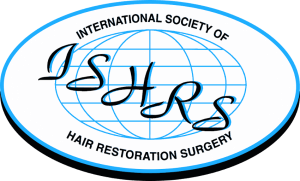Updated 31/08/2023
Hair is more complex than it appears on the surface. As is the hair growth cycle. We all know that it not only plays a vital role in the appearance of both men and women, but it also helps to transmit sensory information as well as create gender identification.
Hair has two main distinct structures:
- The follicle itself, which resides in the skin
- The shaft, which is what is visible above the scalp
The hair follicle is a tunnel-like segment of the epidermis that extends down into the dermis. The structure contains several layers that all have separate functions. At the base of the follicle is the papilla, which contains capillaries, or tiny blood vessels that nourish the cells. The living part of the hair is the very bottom part surrounding the papilla, called the bulb. The cells of the bulb divide every 23 to 72 hours, remarkably faster than any other cell in the body.
Two sheaths, an inner and outer sheath, surround the follicle. These structures protect and form the growing hair shaft. The inner sheath follows the hair shaft and ends below the opening of a sebaceous (oil) gland, and sometimes an apocrine (scent) gland. The outer sheath continues all the way up to the gland. A muscle called an erector pili muscle attaches below the gland to a fibrous layer around the outer sheath. When this muscle contracts, it causes the hair to stand up which also causes the sebaceous gland to secrete oil.
The sebaceous gland is vital because it produces sebum, which conditions the hair and skin. After puberty, our body produces more sebum but as we age we begin to make less sebum. Women have far less sebum production than men do as they age.
What is the hair cycle?
There are natural ways to speed up hair growth, such as a healthy lifestyle and trying to keep stress levels to a minimum. An adequate amount of sleep and exercise will help to control stress levels. Physical activity encourages your body circulation including your scalp, promoting hair growth. Make sure to avoid fad diets, if you aren’t eating enough protein and iron you will lack energy which will lead to hair loss as well as other deficiencies. Understanding the hair growth cycle will help you identify problems that you may encounter with your hair.
An Overview of the Hair Growth Cycle
Each hair follicle lives in a cycle of a long period of growth, followed by a relatively short period of rest. During the rest period, the hair is still attached to the hair follicle, but it is not growing. After the resting phase, the hair is shed and a newer hair begins to grow, starting a new hair growth cycle.
Genetics determine hair follicles’ pattern of growth and rest. As we age, hair follicles are programmed to stop producing hair and spend more time in the resting stage.
Hair on the scalp grows about 0.3 to 0.4 mm/day or about 6 inches per year. Unlike other mammals, human hair growth and shedding is random and not seasonal or cyclical. At any given time, a random number of hairs will be in one of following three stages of growth and shedding: Anagen, Catagen, and Telogen.
Anagen (Growing) Stage
Anagen is the active growing phase of the hair. The cells in the root of the hair are dividing rapidly. A new hair is formed and pushes the club hair (a hair that has stopped growing or is no longer in the anagen phase) up the follicle and eventually out. During this phase, the hair grows about 1 cm every 28 days. Scalp hair stays in this active phase of growth for two to six years.
Some people have difficulty growing their hair beyond a certain length because they have a short active phase of growth. On the other hand, people with very long hair have a long active phase of growth. The hair on the arms, legs, eyelashes, and eyebrows have a very short active growth phase of about 30 to 45 days, explaining why they are so much shorter than scalp hair.
Catagen (Intermediate) Stage
The Catagen phase is a transitional intermediate stage of hair growth and about 3% of all hairs are in this phase at any time. Hair follicles prepare themselves for the resting phase. This phase lasts for about two to three weeks. Growth stops and the outer root sheath shrinks and attaches to the root of the hair. This is the formation of what is known as a club hair. During this phase, the deeper portions of the hair follicles start to collapse.
Telogen (Resting or Shedding) Stage
Telogen is the resting and shedding phase of the hair cycle and usually accounts for 6% to 8% of all hairs. This phase lasts for about 3 to 4 months for hairs on the scalp and longer for hairs on the eyebrow, eyelash, arm, and leg. During this phase, the hair follicle is completely at rest and the club hair is completely formed. Pulling out a hair in this phase will reveal a solid, hard, dry, white material at the root. About 25 to 100 telogen hairs are shed normally each day. At the end of this period, older hairs that have finished their life will fall out and newer hairs will begin to grow.
The Timespan of the Hair Growth Cycle
The anagen phase constitutes about 90% (1,000 days or more) of the growth cycle.
The catagen phase (10 days) and telogen phase (100 days) constitute only 10% of the hair growth cycle. During the catagen and telogen phase of the hair growth cycle, as hairs are at the shedding and rest-from-growth period, no bald spots are shown as hairs are randomly distributed over the scalp.
If you have any questions, then please feel free to contact us today on either method T: 0808 169 7210. E: info@hairdr.co.uk alternatively you can book a free consultation via our website.
FAQs:
How many hair follicles do we have on our scalp?
On average, humans have about 100,000 to 150,000 hair follicles on their scalp.
Can hair loss be reversed?
In some cases, hair loss can be reversed through lifestyle changes, medical treatments, or hair restoration procedures.
Does hair growth slow down with age?
Yes, as we age, the rate of hair growth tends to slow down, and hair follicles may become thinner.
Is hair loss always due to genetics?
No, hair loss can be caused by a variety of factors, including genetics, hormonal changes, medical conditions, medications, and lifestyle.
Can certain hairstyles damage hair follicles?
Yes, tight hairstyles like braids and ponytails can cause hair follicle damage and lead to hair loss over time.
How long does a hair follicle remain inactive during the Telogen phase?
During the Telogen phase, a hair follicle remains inactive for about 2 to 3 months before shedding the old hair and entering the Anagen phase again.









